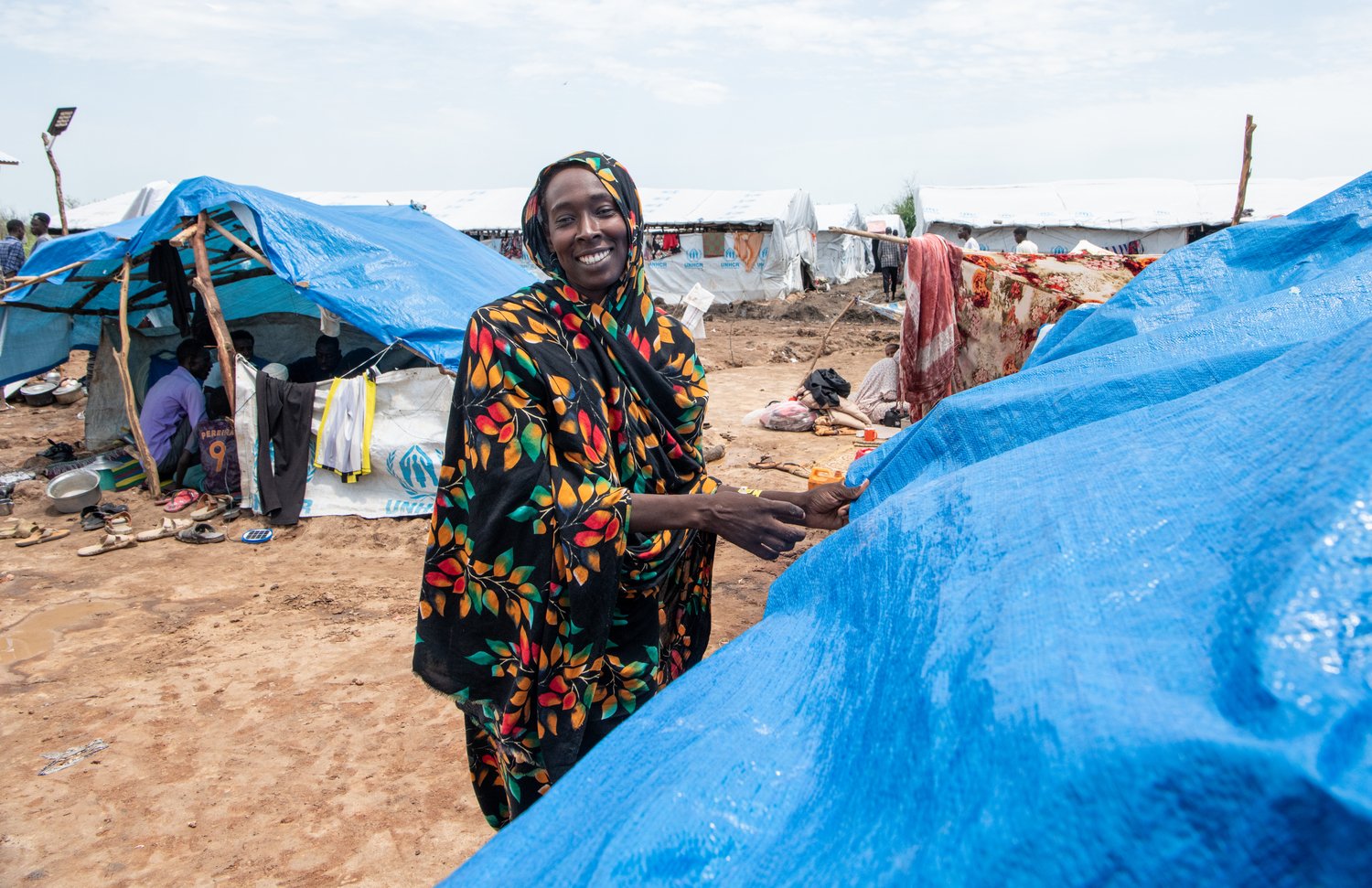As more people flee conflict in Sudan, conditions at South Sudan border deteriorate

As more people flee conflict in Sudan, conditions at South Sudan border deteriorate
Sudanese refugees and South Sudanese returnees arrive at the Renk Transit Centre after crossing the border from Sudan.
The vast majority of the new arrivals are returning refugees who had been living in Sudan since fleeing South Sudan’s own brutal civil war. A smaller number are Sudanese like Aziza Harba Idriss and her family, who were living comfortable lives in Khartoum, the capital, before the conflict broke out in April. They hid under their beds for several days as the violence intensified.
"Every day we heard bombs falling,” said the mother of eight. “We heard about people we knew who died, including children; others were displaced. We lived in fear both day and night.”
After running out of food and water, Aziza and her husband fled to Al Jazirah State where they stayed with relatives for three months. But as the conflict dragged on, Aziza embarked on a dangerous three-day journey to South Sudan with her children.
“We experienced a lot of challenges along the way,” she said. “We were stopped at roadblocks [by armed men] and told to get out of the vehicle. They asked us where we were going. We said we were looking for a safe place to stay and survive. They harassed us and took our money.”
Aziza’s family eventually joined the more than 240,000 returning South Sudanese and Sudanese refugees who have crossed into South Sudan in recent months.
“When we arrived at the Joda border, we were warmly welcomed by people in South Sudan,” said Aziza. “We went through health screening and were transported to this transit centre. WFP (the World Food Programme) and UNHCR (the UN Refugee Agency) gave us cash tokens, mats, and blankets for the family.”
The family are now sharing a communal shelter with 16 other families. “The space is very small, but we try to squeeze ourselves and share the space because when it rains, we can’t sleep outside,” said Aziza.

Aziza Harba Idriss, from Sudan, rigs up some shade to protect her family from the scorching sun at the transit centre in Renk.
Needs mounting
Each day, more people are arriving at the transit centre set up by UNHCR in Renk. Originally built to accommodate 3,000 people, more than 8,000 people are now living in and around the centre in increasingly difficult circumstances.
“We need to build more shelters and provide health services,” said Jimmy Ogwang, UNHCR’s Associate Field Officer in Renk. “We have children who are coming in malnourished, but also there are people who are coming with chronic illnesses.”
He added that the rains have complicated urgent efforts to help people leave the congested transit centre and reach their home areas or more permanent camps.
The influx of South Sudanese returnees and refugees from Sudan is putting pressure on the limited resources of a country recovering from a protracted civil war and the devastating impacts of climate change. South Sudan was already hosting over 300,000 refugees and asylum-seekers in addition to more than 2.3 million internally displaced people.

Umjuma Achol Mut washes dishes outside her makeshift shelter at the transit centre.
Umjuma Achol Mut, 29, fled her home in Bentiu, South Sudan, in 2016 following brutal violence that left her traumatized. She first fled to a refugee camp in Ethiopia’s Gambella region and later moved to Sudan where she hoped to rebuild her life.
“The situation forced me to come back,” she said. "Now, the question remains in my mind – how are my children going to survive and get education?”
Lack of funding, poor access, and inadequate infrastructure are making it extremely challenging for aid agencies to respond to the emergency and ease pressure on the overcrowded transit centre and border area.
During a recent visit to South Sudan, UN High Commissioner for Refugees, Filippo Grandi, observed the critical challenges faced by humanitarian organizations and called for urgent support for people fleeing the crisis in Sudan.
“The challenges are huge. Humanitarian needs are multiplying – for food, health care and proper shelter,” Grandi said. “Special attention [needs to be given] to women who, in a situation like this, are exposed to very high risks.
Four months into the conflict in Sudan, some one million people have fled to neighbouring countries. That number is expected to reach more than 1.8 million people by the end of 2023, which will increase overall funding needs to over $1 billion.
Aziza wants to build a future for her children in South Sudan once she is able to leave the transit centre.
“People are just sitting here,” she said. “Even the children can't go to school. Although the support we are receiving is helping us survive, we have challenges.”
“The situation forced me to come back.”









